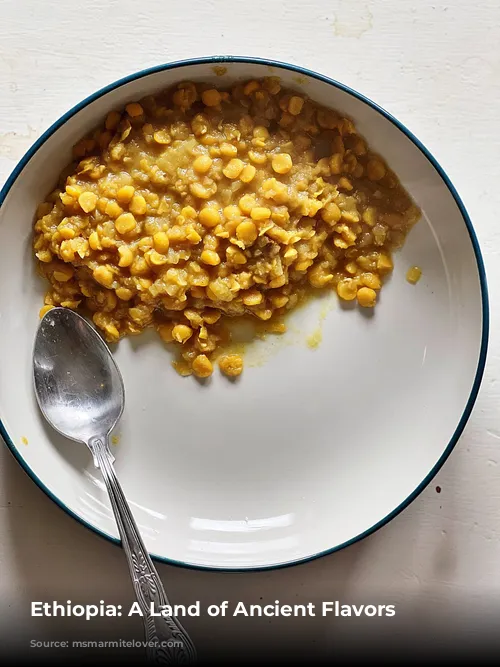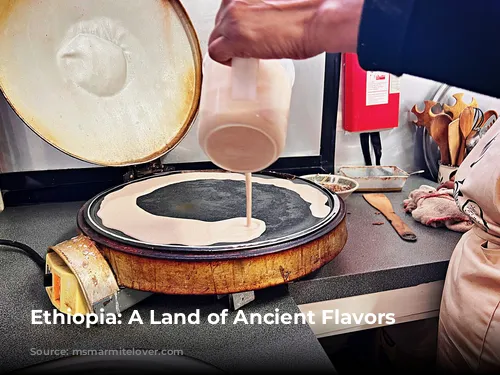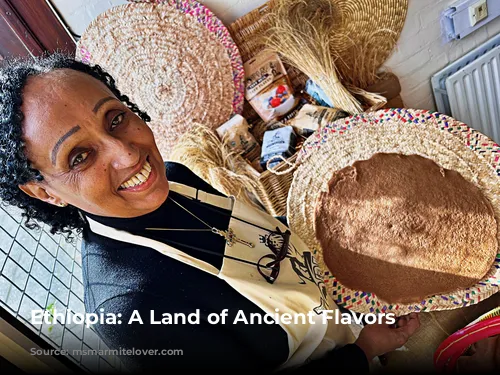Imagine a place where the echoes of humanity’s earliest footsteps reverberate through the ages. Ethiopia, a nation nestled in the heart of Africa, boasts one of the oldest civilizations on Earth. Its history of monarchy stretches back an astonishing 4,000 years, eclipsing even the British crown, until the dramatic upheaval of the 1974 revolution that toppled Emperor Haile Selassie.
It was during this tumultuous period that a young schoolgirl named Sefanit Sophie Sirak-Kebede, future founder of Tobia Teff, a renowned company specializing in Ethiopian ingredients, found herself studying far away from home at an English boarding school. Meanwhile, her husband, Meny, a trainee at Sandhurst destined for the Imperial Guard, was preparing for his own path.
After the revolution, Sophie and Meny, her husband, never returned to their homeland. Sophie, who possesses the captivating allure of a bygone era, and her husband, chose to build a life elsewhere. Sophie’s captivating charm, reminiscent of a silver screen star from the 1920s, was a constant throughout their journey. Sophie’s passion for food eventually led her to create Tobia Teff, a company that has garnered accolades for its exceptional products. From a humble workshop in Wembley, she has become a beacon of Ethiopian culinary tradition, providing ingredients like the ancient and nutritious teff flour.

A Culinary Journey Through Time
I had the opportunity to visit Sophie in Wembley, eager to delve into the secrets of Ethiopian cuisine and witness firsthand the creation of injera, a staple dish. Sophie explained that the heart of Ethiopian cuisine lies in its vegan foundations, a reflection of the Orthodox faith’s emphasis on fasting. Every Wednesday and Friday, as well as during the traditional Advent and Lent seasons, Ethiopians adhere to this practice. Interestingly, the Amharic word for “fasting” is the same as the word for “vegan,” highlighting the deep connection between faith and dietary traditions.
Teff, the world’s smallest grain, is a cornerstone of Ethiopian cuisine. This gluten-free, iron-rich wonder has been cultivated for over six thousand years, providing sustenance to generations. It is the star ingredient in injera, a spongy, pancake-like flatbread that is fermented and cooked to perfection.
In Ethiopia, eating is a communal affair, a celebration of togetherness. Forget individual plates, here you’ll find a tapestry of flavors, known as “wot,” served on a large expanse of injera, acting as a shared edible tablecloth. As Sophie eloquently puts it, “He who is alone will die alone. He who is with the family will die with the family. There is no individual plate, you share.”

Beyond the Plate: A Culture of Hospitality
The Ethiopian spirit of hospitality is deeply ingrained in their culture. If you happen to enter a room or a restaurant where people are enjoying a meal, you will inevitably be welcomed to join them. It’s a beautiful testament to their values of shared experiences and warmth.
Coffee, an important Ethiopian export, is more than just a beverage; it’s a ritual. The raw green beans are meticulously roasted, and then, using a special coffee set, the decoction is brewed three times. The aroma of roasting beans, combined with the smoky scent of incense and toasted barley, once filled Ethiopian cafes. Today, young people in Addis Ababa enjoy their coffee accompanied by popcorn, a modern twist on a timeless tradition.

The Art of Making Injera
Making injera is a labor of love, a testament to the dedication and patience inherent in Ethiopian cuisine. While it’s a rewarding experience, it’s also a challenge. The process is meticulous, requiring time and attention to detail. For the impatient, there’s always the option of purchasing ready-made injera from ethnic shops in London’s Kilburn and Shepherd’s Bush Market, where a vibrant Ethiopian community thrives.
You can also acquire both the flour and bread from Tobia Teff, especially helpful for those with gluten sensitivities. A prescription from your GP grants access to these essential ingredients, allowing you to enjoy the taste of Ethiopia even if your dietary needs require it.
Here are some steps for making Injera, which I am sure will delight your senses.
- Grease the pan with a little clarified butter or vegetable oil to prevent sticking.
- In a bowl, mix the teff flour with lukewarm water until thoroughly combined. Cover the mixture and allow it to rest in the refrigerator for three days.
- Whisk together the flour and 600 ml of water in a separate bowl.
- Incorporate the original starter into the flour and water mixture. Cover the bowl and let it sit in a warm place for three days.
- On the seventh day, bring 600 ml of water to a boil in a large pan. Gradually add 300 ml of the fermented injera batter to the boiling water, stirring constantly. Allow the mixture to simmer over low heat for 6 to 7 minutes. Pour the mixture back into the original bowl and stir well. Cover the bowl and leave it overnight in a warm place.
- On the eighth day, heat a flat-bottomed frying pan over medium heat. Pour the batter thinly and evenly onto the pan, starting from the outside and spiraling inwards towards the center. Cover the pan and cook for a minute or two. The batter should bubble like a crumpet.
- Remove the injera from the pan using a fish slice and set it aside to cool. Repeat the process until all the batter is used. Serve the injera with your favorite sauces. You can roll up the injera and freeze it for later use.
Injera, a culinary embodiment of Ethiopia’s rich history, is more than just a flatbread; it is a testament to the enduring spirit of a people who have cultivated their traditions for millennia. The next time you crave a taste of adventure, embark on a culinary journey to Ethiopia, where ancient flavors and a vibrant culture await you.











